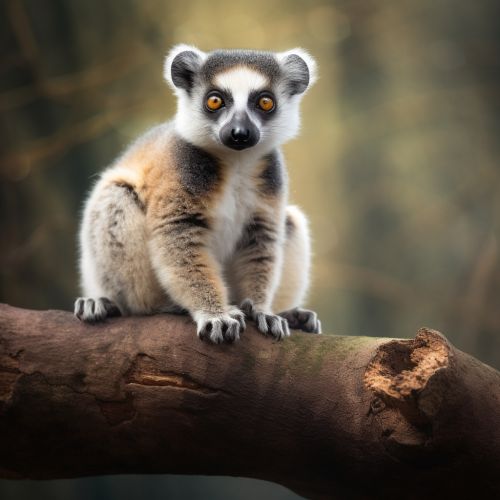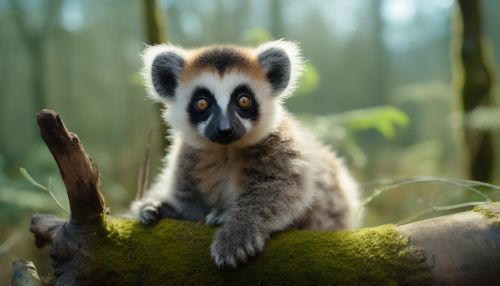Strepsirrhini
Introduction
Strepsirrhini is a suborder of primates that includes the lemuriform primates, which consist of the lemurs of Madagascar, galagos ("bushbabies") and pottos from Africa, and the lorises from India and southeast Asia. The name Strepsirrhini derives from the Greek words for "curved" and "nose", which refers to the rhinarium of the animals in this suborder.


Evolution and Taxonomy
The Strepsirrhini suborder is one of the most ancient groups of primates and has existed for at least 63 million years. They are thought to have evolved from early primates known as Adapiformes, which are now extinct. The Strepsirrhini suborder is divided into two infraorders: Lemuriformes and Lorisiformes.
Lemuriformes
Lemuriformes, or lemurs, are found exclusively in Madagascar. They are further divided into five families: Cheirogaleidae, Lemuridae, Lepilemuridae, Indriidae, and Daubentoniidae. Each family contains different species of lemurs that vary greatly in size, appearance, and behavior.
Lorisiformes
Lorisiformes include the lorises, pottos, and galagos, and are found in Africa and Asia. They are divided into two families: Lorisidae and Galagidae. Lorisidae includes the lorises and pottos, while Galagidae includes the galagos.
Anatomy and Physiology
Strepsirrhini primates are characterized by their wet noses, a trait they share with other mammals like dogs and cats, but not with other primates. This is due to the presence of the rhinarium, a moist, naked surface around the nostrils connected to the upper lip.
Strepsirrhini have a strong sense of smell, which they use for communication and finding food. They also have a reflective layer behind the retina, called the tapetum lucidum, which enhances night vision, making many Strepsirrhini species nocturnal.
Behavior and Ecology
Strepsirrhini primates exhibit a wide range of behaviors, from solitary to social. Many species are arboreal, spending most of their time in trees, while others are terrestrial, spending their time on the ground.
Strepsirrhini primates have a varied diet that includes fruits, leaves, insects, and small animals. Some species, like the aye-aye, have specialized diets and unique foraging methods.
Conservation
Many Strepsirrhini species are threatened by habitat loss, hunting, and the pet trade. Conservation efforts are underway to protect these unique primates and their habitats.
